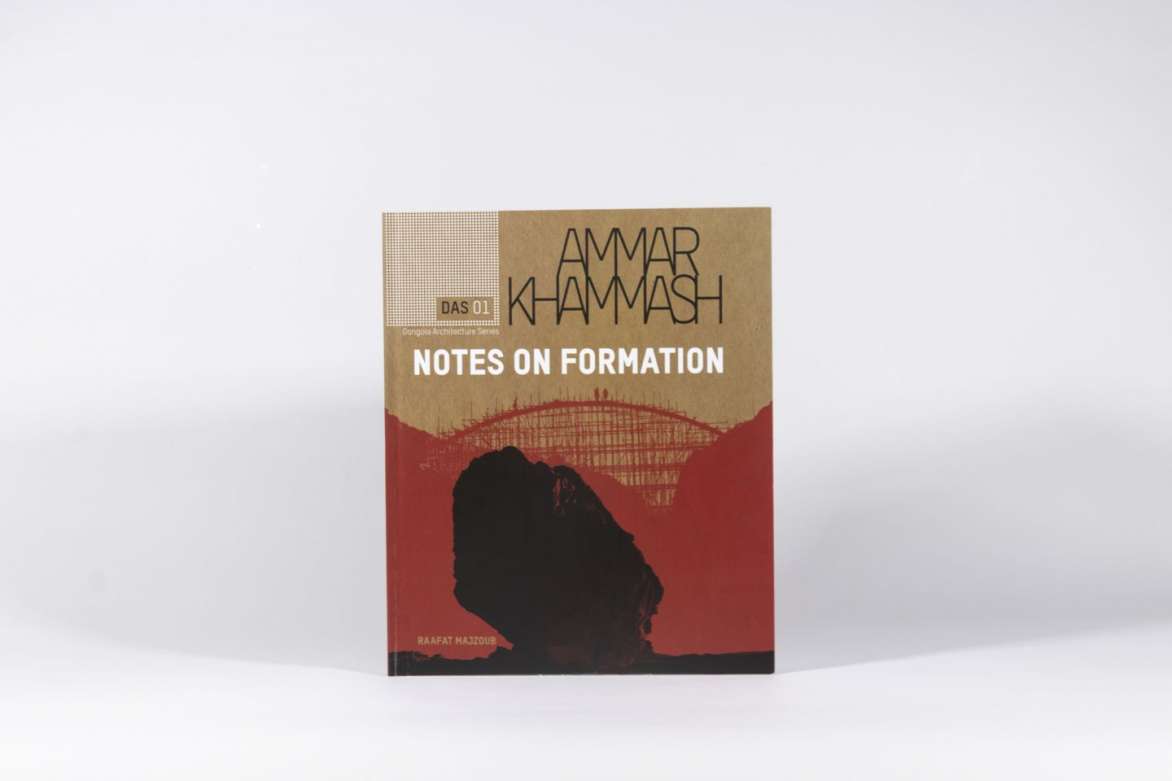Beirut-based “Dongola Limited Editions”, a publisher focused on contemporary culture and local knowledge production launches the “Dongola Architecture Series” (DAS) whose debut monograph titled “Notes on Formation: Ammar Khammash” dives into the perspective of Jordanian architect, artist, and anthropologist Ammar Khammash.
Raafat Majzoub (SMACT ‘17) edits the biannual series that aims to highlight the thoughts, processes, and social impact of leading architects from the MENASA region beyond their built work. Each monograph features an architect’s story, revealed through in-depth one-on-one discussions with them. By investing in conversations rooted in cultural and methodological innovation, instead of merely showcasing finished buildings, the series uncovers how architects, through their craft, interrogate heritage, engage with labor and gender roles, develop economies, establish social systems, and most importantly, produce culturally specific knowledge.
Ozum Itez sits down with Raafat Majzoub and Dongola Founder Sarah Chalabi to discuss this new project:

Notes on Formation – Ammar Khammash book in MMAG foundation, a building Ammar Khammash recently renovated. Photograph by Laetitia El Hakim.
How did Dongola Architecture Series start, and why do you think the architectural lens is important to highlight today?
Sarah Chalabi: The world has changed a lot since we started dreaming up this project.
Raafat Majzoub: It’s a pre-pandemic baby.
SC: Exactly! Since then, we had to reassess our priorities several times. Lebanon, our home, has gone through a series of urgencies since late 2018, the pandemic, an economic crisis, a revolution, and an explosion of city-scale magnitude to name a few, and it has led us to question the relevance of this project when it seemed like our energy is supposed to be useful elsewhere.
RM: It was a very challenging process. On one hand, we both believe that architecture is one of the few truly interdisciplinary platforms that enable intersectional conversations on culture because it is inherently dependent on the collaboration of multiple disciplines. On another, our world was -and still is- perpetually falling apart.
SC: It needed to happen though… DAS is not a project that responds to the times in an immediate manner but zooms out on what we’re building for our future, even when it looks bleak.
RM: I remember being an architecture student and having little to no access to references to Arab architects developing culturally sensitive methodologies that go beyond responding to client briefs. For inspiration, we would look at the greats in Europe and North America. They became our imported heroes when we had our own architects studying, writing, and building stories that could have had much higher resonance with the issues we were facing.
And how does this book tackle that?
SC: Publishing allows you the time and care to develop public narratives. Our work is political in that sense. So even when the world is made to seem like it’s crumbling, we operate on a different plane.
RM: Take this first issue of DAS for example. Notes on Formation tells the story of Jordanian architect, anthropologist, botanist, and artist Ammar Khammash. He is an uncompromising creative, refusing any disciplinary bounds. Shedding light on his practice is not only a lens onto his architecture but uses his philosophy on architecture and nature as a lens onto the production of contemporary cultural practices in the Arab world, practices such as labor practices, sustainable design, material sensitivity, and knowledge production.

Notes on Formation – Ammar Khammash book in MMAG foundation, a building Ammar Khammash recently renovated. Photograph by Laetitia El Hakim.
It is indeed bold to have a book about an architect whose practice spans over 30 years, without featuring his buildings.
SC: It definitely took courage and trust from Ammar for such a book to come to life. When we were brainstorming the mission of DAS, we were adamant about not recreating another architecture catalog. We’re at a time where anyone who wants to find anything can simply google it. The team behind DAS is hungry for what happens before the act of building, the momentum of thought, experiments, failures, and relationships born out of the intention to create environments that are particular to the way we live.
RM: Something that stuck with me since my architecture student days is a quote by Aaron Betsky, “Buildings are the tombs of architecture.” It sounds morbid, but it’s actually very inspiring. It allows us to separate architecture as a complex form of critical cultural thinking from the final gesture of the architectural process, the act of building itself. In this series, what we are trying to do is to open up thinking about architects in the Arab world and give them the credit they deserve. They are worldmakers in one of the most unstable, precarious, and culturally-specific territories, and we want to listen to what they have to say.

What is the future of this series, where are you going from here?
RM: Our process is quite enviable. We spend our time talking to brilliant thought leaders and trying to connect the dots and build new networks and narratives around their practices. We have two issues coming out this year, our June issue is with someone very dear within the MIT community… not sure we can share this yet, though, can we Sarah?
SC: Let’s keep it as a surprise. Maybe we can share the title? “Critical Encounters”… for those who know the person, we already revealed too much.



